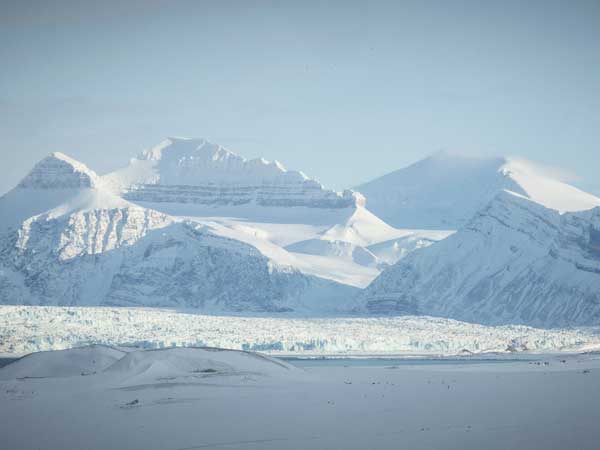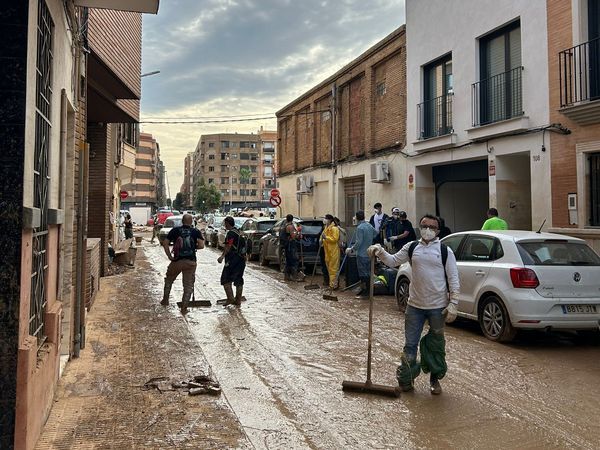An international team of scientists has reached the Holtedahlfonna icefield in the Svalbard Archipelago on 1st April 2023, setting up camp at an altitude of 1,100 meters in the Arctic (latitude 79.15 North). The expedition is led by the Institute of Polar Sciences of the National Research Council of Italy (CNR) and involves scientists from the French National Centre for Scientific Research (CNRS), Norwegian Polar Institute (NPI), Ca’ Foscari University of Venice, and the University of Perugia. The scientific objective is to collect two ice cores of 125 meters long each to better understand the “Arctic amplification” phenomenon. Thanks to the collaboration with the Ice Memory Foundation, an ice core will be preserved for centuries to come at the dedicated Ice Memory Sanctuary in Antarctica. Future generations of scientists will thereby have access to the high-quality ice core to study the past climate of our planet as to anticipate future changes, long after the glacier has disappeared due to global warming.
The international team of scientists studying the complex dynamics of this “Arctic amplification” has reached the Holtedahlfonna icefield, on the Spitsbergen island. The Team is setting up camp and on, 4th April, will start drilling two ice cores: one for the science of today, the other for future generations. The data contained in Svalbard’s glaciers are, in fact, seriously threatened by climate change.
They will be operating for about 20 days at an altitude of 1,100 meters and facing temperatures that can reach as low as -25C°. The drilling site of Holtedahlfonna is on a relatively accessible icefield in the Archipelago, because of its proximity to Ny-Ålesund, the world’s northernmost year-round research station. Scientists aim to reach a depth of about 125 meters into the glacier and reconstruct climate signals for the last 300 years.
The Svalbard Archipelago, the Northernmost European land, is an invaluable archive that is disappearing 4 times faster than the global average. This area has experienced some of the most severe temperature increases in the last decades. According to recent studies, the temperature has risen by 4/5°C during the last 40–50 years.
The research objective is to increase scientific understanding of the roles of sea ice, bromine, and mercury in the “Arctic amplification” phenomenon. This phenomenon is due to the reduction of sea ice, increasing the absorption of solar radiation. As the sea ice melts, absorption rates increase, resulting in a positive feedback loop where the rapid pace of ocean warming further amplifies sea ice melt. This feedback loop is largely responsible for what is known as Arctic amplification, and is the explanation for why the Arctic is warming so much more than the rest of the planet.
“We aim at determining the role of sea ice in Arctic amplification and its impact on the atmosphere, in particular on the chemical processes of bromine and mercury. The data obtained will be compared with satellite data on sea ice extent and snow accumulation measurements. In addition, atmospheric transport models will be used to establish the possible provenance areas of the two chemical species”, explains Andrea Spolaor, glaciologist and geochemist at the Institute of Polar Sciences of CNR and Svalbard expedition leader.
Previous ice cores extracted on the same site provided detailed records of past climate conditions, including temperature, precipitation, and atmospheric composition. However, scientists are currently investigating if and how the recent acceleration of temperature increases has already impacted the quality of climate and environmental signals. Preliminary results suggest that collecting a heritage ice core is urgent.
This is why scientists from this expedition joined forces with the Ice Memory Foundation to collect an ice core that will be preserved with many others from endangered glaciers around the world, for centuries to come at a dedicated Ice Memory Sanctuary in Antarctica. Future generations of scientists with new technologies and new ideas will thus have access to high-quality ice cores.
“Glaciers at high latitudes, such as those in the Arctic, have begun to melt at a high rate. We want to recover and preserve, for future generations of scientists, these extraordinary archives of our Planet's climate before all the information they contain is completely lost”, explains Carlo Barbante, paleoclimatologist, director of the CNR’s Institute of Polar Sciences, professor at Ca’ Foscari University of Venice and Vice Chairman of the Ice Memory Foundation.
One of the Holtedahlfonna ice cores will be stored in the Ice Memory Sanctuary, a dedicated snow cave built at the French-Italian Concordia Station - Antarctica by 2024-2025. Jointly managed by the French Polar Institute and the Programma Nazionale di Ricerche in Antartide (PNRA) of Italy, the Ice Memory Sanctuary will allow natural storage of the ice cores at -50°C. It will guarantee long-term preservation, thereby protecting the precious samples from any risks of disrupted refrigeration that may be encountered when stored in commercial freezers in Europe (for example technical problems, economic and energetic crisis, conflict, etc).
Moreover, Ice Memory heritage ice cores will be stored for centuries to come, in full respect of the Madrid Protocol for environmental protection of Antarctica. Thanks to the Ice Memory sanctuary, future generations of scientists with new technologies and new ideas will thus have access to high-quality ice cores even after these glaciers have fully disappeared. They will be able to pursue research on the environment and global climate.
“The beauty of the Ice Memory initiative is not to produce added value in terms of today’s knowledge, but to create the conditions that will allow those who come after us can produce it” points out Jérôme Chappellaz, climate scientist (EPFL-CNRS) and Chairman of the Ice Memory Foundation. The Ice Memory heritage - extracted from about 20 glaciers over 20 years - is destined to become a common good of humanity, and will be preserved in the future under international governance.
About:
The Ice Memory Foundation was founded by 7 scientific institutions: University Grenoble Alpes, CNRS, French National Research Institute for Sustainable Development - IRD, French Polar Institute in France, Ca’ Foscari University of Venice, CNR in Italy, Paul Scherrer Institute in Switzerland and is sheltered by the University Grenoble Alpes Foundation. ice-memory.org
The expedition is part of the SENTINEL project (The impact of sea ice diSappearance on highEr North aTlantic clImate and atmospheric bromiNe and mErcury cycLes), funded by the Arctic Research Program (PRA) of the Italian Ministry of University and Research. The expedition is led by the Institute of Polar Sciences of the National Research Council of Italy (Cnr) and involves scientists from the French National Centre for Scientific Research (Cnrs), Norwegian Polar Institute, Ca’ Foscari University of Venice, and the University of Perugia. Karpos, Aku, and Polibox are the expedition’s technical sponsors











